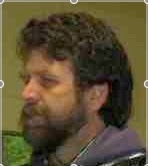The "Top Ten Land Grant” Vision for OSU (these are some ideas I've shared with a variety of folks at OSU.)
There are a great number of conversations around this element of the OSU Mission. Here’s one take on pieces of the puzzle.
First, “Find ways to build collaborations rather than document walls.”
Enter the conversation by making the following a priority at OSU/statewide.
* The role of researchers and research dollars in a broader vision of outreach
* The growing, and long overdue, need develop broader structural support for outreach scholarship at OSU
* The need to look at outreach as scholarship in terms of faculty rewards (not just as service)
* The need for university-wide collaborations akin to, and building on, extension's mission
* The need to build on the statewide mission through strategic, very public initiatives
Using this to enhance our ability to support faculty research efforts, support and train graduate students to participate in outreach, and develop in both scholarly these areas our “Top 10 Land Grant” vision. A key is seeking and targeting funding that builds our expertise on effective outreach, education and service to our community. Thereby, developing the community collaborations and partnerships necessary to reach out to all Oregonians. And to define how we’ll measure reaching the “Top Ten.”
* To articulate the commitment of each member of the faculty and staff to education and outreach
* To link all academic programs to service, to supporting initiatives to service the needs of a community
* To make rewards for faculty, staff, students and organizations part of the statewide outreach mission
* To look to, and build on, these successes as leadership
Strategic initiatives and examples:
Center for Outreach Scholarships in the College of Education
* Fund 2-3 faculty, professional masters as well as PhD assistantships
Take on a targeted problem on an 18-month cycle
* Look at Oregon’s hunger programs through an annual conference on hunger and nutrition
Build on capacity
* Build on supporting community-based solutions as exemplified by Watershed Councils and their support
Change the way we do business
* Define the underserved people/needs in Oregon and serve them
Link to the Legislature and state leaders
* Develop targeted 5 years plans for economic development in rural, formally resource dependent communities
Build Long-term vision for solutions
* Build on expertise to define and service communities outside the traditional service districts, or outreach for county agents
Ryan Collay, The SMILE Program
Wednesday, October 31, 2007
Subscribe to:
Post Comments (Atom)


No comments:
Post a Comment